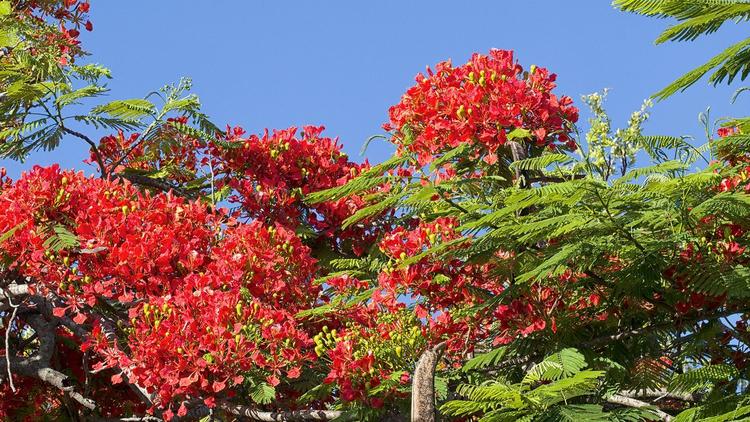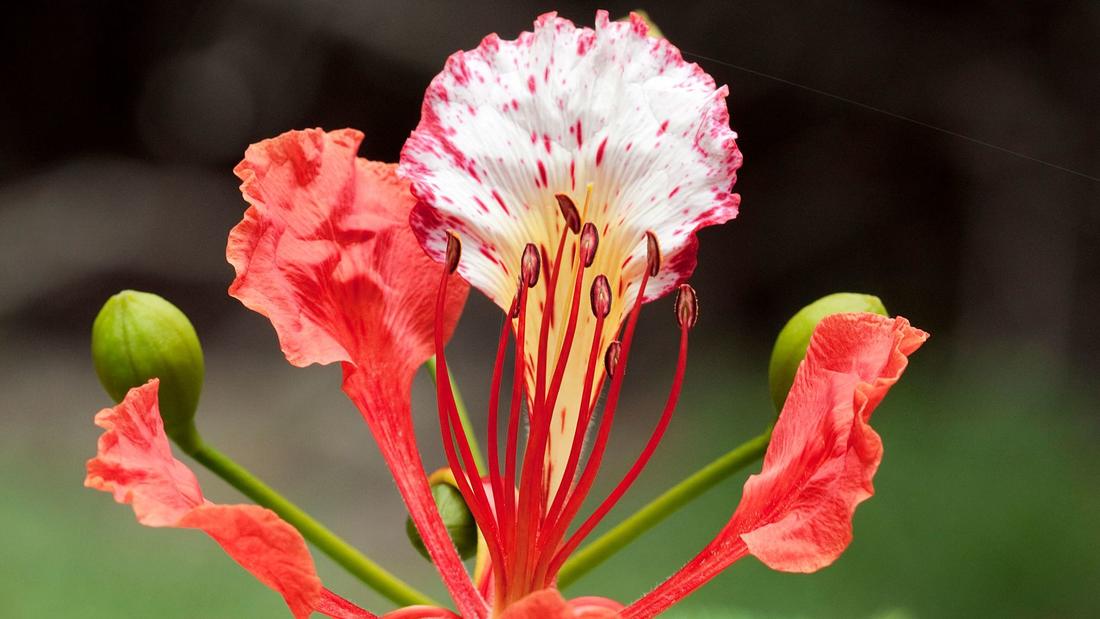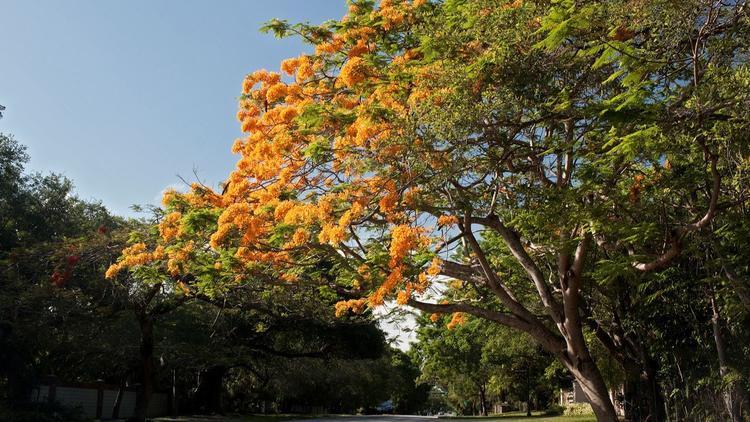Royal poinciana is a Florida favorite

Truly one of the rewards for bearing a Florida summer is seeing the royal poinciana trees in full bloom. Delonix regia bursts into a giant umbrella of stunning, shocking deep red, crimson, orange and magenta flowers. A common street tree, yes, but it has its history and secrets.
About a century ago, the story goes, David Fairchild encouraged the introduction of the gorgeous flame tree — another name for royal poinciana — to Miami’s landscaping and public areas. He was on to something. His wife, Marian, is thought to have planted the one at their Miami residence, the Kampong, in 1917. At a century old, that tree has survived some tumultuous weather.

These Madagascar natives seem to have evolved for warm climates with seasons marked more by changes in precipitation than temperature, perfect for South Florida.
Their drought tolerance and broad, dappled-shady canopy doesn’t hurt their appeal either. The feathery pinnate leaflets, a hallmark of the Fabaceae or pea family, provide bright shade throughout the year, when the tree may go unnoticed until it begins flowering in May and continues to do so for a few months.
Now the (slight) downsides: Poinciana forms small support buttresses at its base, which are really graceful and superficially resemble those of an old Ficus or Kapok tree. The buttresses stay small, but the rest of the root system sprawls out near the surface. The roots can destroy sidewalks, roads, driveways and foundations. It’s therefore best to plant them at least 15 or 20 feet away from any pavement or structures.
Of course, many Miami streets are lined with poinciana right up to the road’s edge, and that road is often root-riddled and uneven with repairs. Planting under poincianas can also be a challenge; consider shallow-rooted plants like bromeliads.
The wood is a bit brittle against storms, so a good rule is to remove any lateral branches that are getting half as thick as the trunk so the tree doesn’t become unstable in rough weather.
While the flowers eventually drop, they aren’t too much of a mess. The fruit, however, are a different story. The tree produces dangling seed pods that are slightly crescent-shaped, woody, and 12 to 18 inches long — another legume family trait. The pods hang through the winter and begin falling in spring and summer, even with flowers present. They contain possibly dozens of rock-hard brown and beige seeds. You can try germinating them by first nicking them with a file or knife before planting. Be careful; they are very hard.
The fruit splits partially open along either side and drops to the ground. Seeds usually remain within the pod. As any gardener will attest, the pods litter the ground and do not decay quickly. I’ve seen them crammed into garbage bins.

Why does this tree devote so much material to that huge seed pod and hard seeds? Other plants in the same family develop similarly, but poinciana is known to invest more “packaging” in its fruit. There’s got to be a reason. Is it so seeds can disperse by flooding? It’s possible — the pods do, indeed, float. It’s also possible the intended seed disperser is a long-extinct animal that chewed the pods while green, swallowing it and its seeds, which are hard enough to pass through the digestive tract unharmed.
Royal poinciana is drought-tolerant but does best with regular water in the growing season and very little water in its dormant season. So once established, it’s nearly maintenance-free. There’s even an annual Royal Poinciana Fiesta held in South Florida in June to help us appreciate these stars among our tropical flowering trees, as we gather and discard their fruit, possibly holding a relic evolved for an animal of a bygone age.
This article was written by Kenneth Setzer and originally published in the Miami Herald, August 25, 2017. Minor changes from the print version of this article were introduced to improve readability in a digital format.
